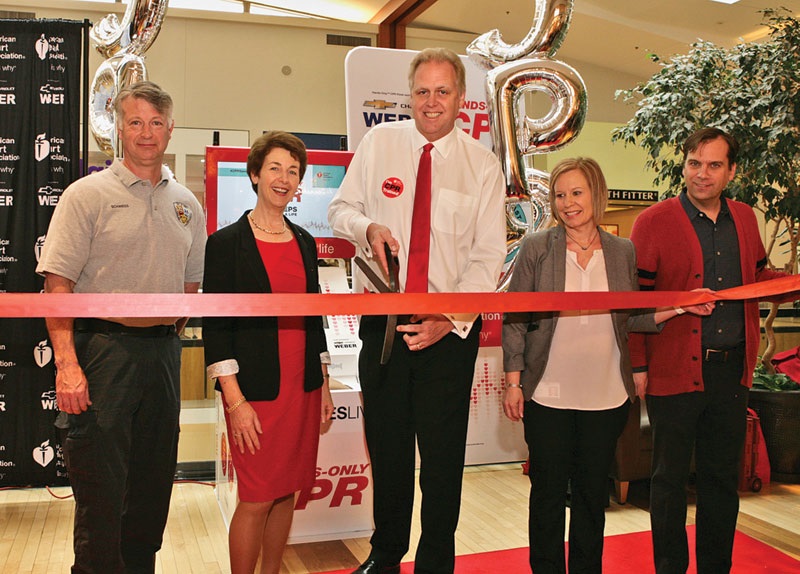Each year, more than 350,000 cardiac events occur outside the hospital, with more than 20 percent happening in public places. These eye-opening statistics from the American Heart Association (AHA) only solidify the need for its dedication to building healthier lives free of cardiovascular disease and stroke and educating the public on life-saving techniques. One of its main efforts is increasing the number of individuals who know cardiopulmonary resuscitation (CPR) so more people can offer immediate help in a cardiac emergency and potentially save lives.
The harrowing experience motivated Smith to raise awareness about heart disease and urge people to learn CPR. She began working with AHA, and her Christmas holiday that year included teaching her family the proper technique. She notes that even her 4-year-old daughter knows the correct motions. “It takes minimal time to learn, but it can have a huge impact on someone’s life,” she says. “It’s critical to increasing the chance of survival, which is one of the reasons I became so involved.” In 2016, Smith went to Jefferson City to testify with one of her daughters in support of a new law to introduce CPR training as a graduation requirement for Missouri high schools. The law passed, and this year’s graduating class will be the first to receive the required first aid training.
To make CPR instruction even more accessible, AHA has installed an interactive kiosk at West County Center that provides directions for Hands-Only CPR. According to the nonprofit, there are two simple actions bystanders should take when they see an adult or teenager collapse: call 911 and push hard and fast in the center of the chest. Uncertain of how often to push? Just hum The Bee Gees’ “Stayin’ Alive.” The song has a rhythm of 100 beats per minute, the minimum rate you should push on the chest during Hands-Only CPR. The kiosk provides a video introduction and overview of the process. Users then complete both practice and test sessions on a CPR manikin. Participants receive feedback about the depth and rate of compressions and proper hand placement, and the entire process only takes around 5 minutes.
The kiosk is sponsored by Weber Chevrolet, and owner Skip Weber has high hopes for the impact it will have. “It will help the community understand how simple it is to perform the two steps of Hands-Only CPR, which hopefully will reduce the trepidation people feel about performing it,” Weber says. “After completing the kiosk training, we hope people will feel empowered knowing they are taking the first steps in learning a critical skill.”
The American Heart Association is dedicated to building healthier lives free of cardiovascular disease and stroke. With sponsor Weber Chevrolet, it has installed a new kiosk at West County Center to train people in hands-only CPR. Pictured on the cover: Skip Weber of Weber Chevrolet at the kiosk. For more information, call 314.692.5600 or visit heart.org.
Cover design by Julie Streiler
Cover photo by Tim Parker Photography
Pictured above: EMS officer Gavin Schweiss, Sandra Van Trease of AHA, Skip Weber, Mary Smith and Sean Phillips of West County Center at the kiosk’s ribbon cutting ceremony.
